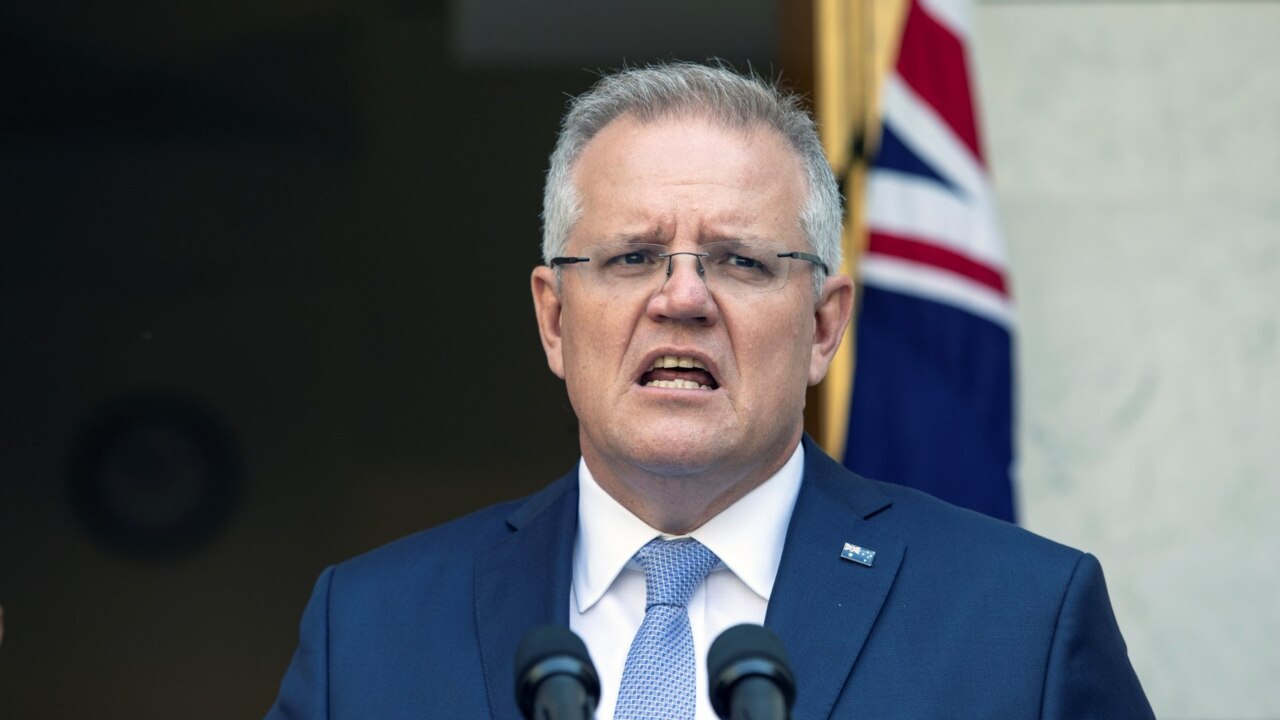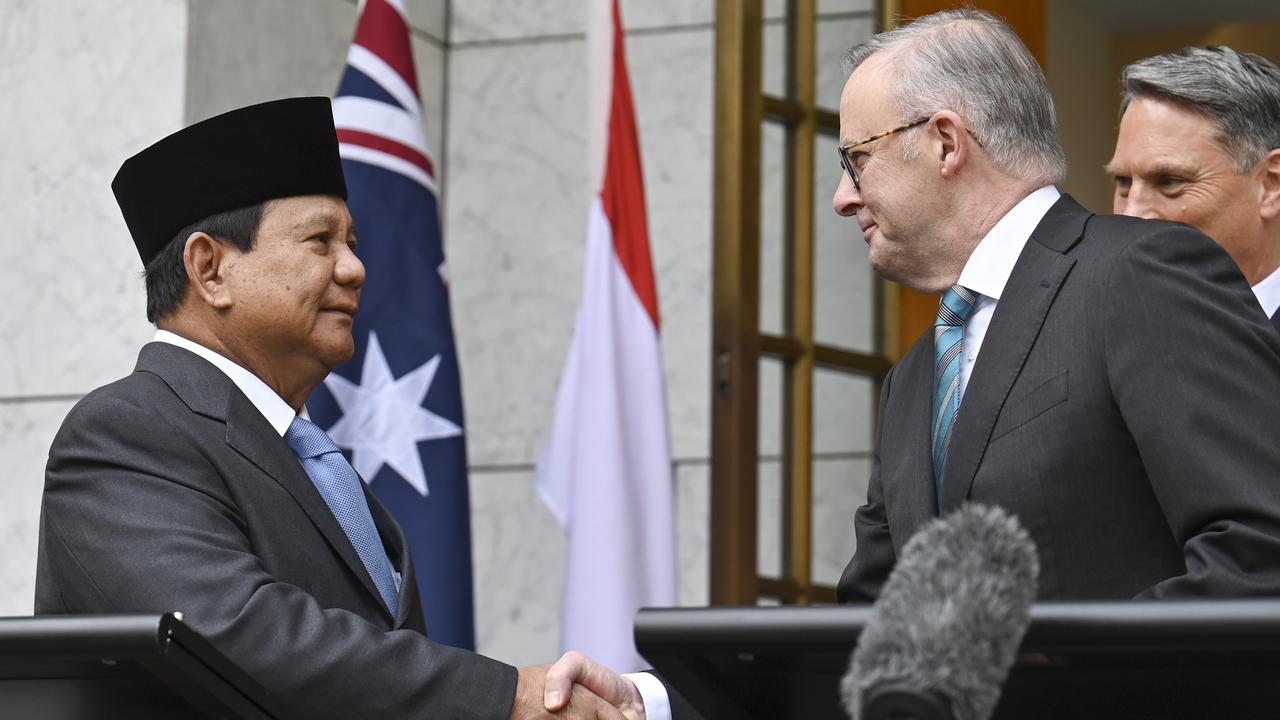Defence Australia: Why buying long-range missiles changes everything
China has toppled the balance of power in the South China Sea. Now Australia aims to do the same over key Indian and Pacific choke points.

Fortress Australia is in the making. And it’s precisely what China warned us against. So what exactly does $270 billion of big-ticket defence spending buy us?
Prime Minister Scott Morrison has decided to spend up big on defence during a national economic emergency. Big money is to be splashed out on cyber warfare, underwater surveillance systems, space communication networks – and high-powered strike missiles.
RELATED: Scandals reveal China’s deep influence
RELATED: China flexes its muscles to Japan

Speaking to the Australian Defence Force Academy, Mr Morrison warned Australia was at the “epicentre” of rising great power “tension”. The risk of “miscalculation” and “conflict” was multiplying.
“The Indo-Pacific is where we live — and we want an open, sovereign Indo-Pacific, free from coercion and hegemony,” he said, without referencing any specific threat.
Not that there is any doubt.
India. Nepal. Bhutan. Vietnam. Malaysia. The Philippines. Japan. These are nations that have faced aggressive military probes of their borders in recent weeks. Then there’s what rapidly devolving into open “Cyber Warfare”, state-backed attacks on international digital infrastructure ranging from small business to big government operations.
Chinese netizens said #Australian media turned a blind eye to hard evidence of the country’s #spy activities against #China, saying it's "laughable and shameful." https://t.co/7O0Hl3YC8U pic.twitter.com/FuxIptvsho
— Global Times (@globaltimesnews) June 29, 2020
“When they talk about the bad behaviour that’s happening in the region, the annexation of territory, coercion, the influencing of domestic politics, the use of cyberattacks – it’s really only one country which is doing that at industrial levels, and that’s the People’s Republic of China,” Australian Strategic Policy Institute (ASPI) head Peter Jennings told ABC RN yesterday.
At the heart of Mr Morrison’s big spend is $800 million for the AGM-158C Long Range Anti-Ship Missile (LRASM). It can be fired from the land or air. It has a range greater than 370km. It’s relatively fast. It’s relatively manoeuvrable.
But it’s a weapon that changes the whole profile of Australia’s military presence within the Indo-Pacific. China knows it. And it’s already been making threats against any such move.
It’s a weapon that signals a shift in Australia’s thinking to one of an ‘echidna’ strategy.
A WORLD OF PAIN
Analysts fear Beijing is reacting to the international COVID-19 pandemic as an opportunity.
Conversely, the United States, Great Britain, the European Union – and Australia – are suffering from seismic disruptions to world trade, supply chains and domestic workforces.
And that’s only accelerating the international balance of power shifting towards Beijing.
“The strategic weight of Australia and its ally the United States is diminishing in relative terms,” Lowy Institute analyst Sam Roggeveen writes for ASPI.
Now Beijing has warned against any nation stationing long-range missiles in the Asia-Pacific region (other than itself).
Washington has in the past been prevented from deploying ground-based 500km-5500km missile under Cold War treaties with Moscow.
China never signed that treaty and has been busily building such weapons now for decades. But the Trump administration walked away from the deal in August last year, mainly in response to Beijing’s growing threat. Later that same month, US Defense Secretary Mark Esper declared he “would like to” deploy such missiles in Asia.
Chinese Defense Ministry spokesman Senior Colonel Wu Qian declared last Wednesday that “China is firmly opposed to the deployment of intermediate-range missiles”.
“If the US insists on the deployment, it will be a provocation at China’s doorstep. China will never sit idle and will take all necessary countermeasures,” Wu told state-controlled media.
AREA DENIAL
Missiles are the cornerstone of Beijing’s growing power. The Chinese Communist Party has a suite of weapons that can reach as far as 4000km from their launch pads – subjecting bases such as Guam or US supercarrier fleets to a hail of high explosive warheads long before their own weaponry can respond.
Batteries of cruise missiles impose deadly ‘bubbles’ reaching some 400km outward from their hardened bunkers in illegal artificial island fortresses. But on top of this is an array of intermediate-range ballistic missiles capable of boosting weapons well beyond Japan, Taiwan and the Philippines.
The overall effect is what is called “area denial”.
Any surface ship within one of these bubbles is under imminent threat. And, in the case of the DF-26 anti-ship ballistic missiles, this can potentially sink a US nuclear-powered aircraft carriers some 4000km out into the Pacific. That carrier has to place itself at considerable risk for a substantial time before its F-35s – which have a strike radius of only 1100km – can be brought into action.
Put simply, the risk of responding to a hostile act – such as an invasion of Taiwan – could be very high.
Australia’s new missile purchase is based on similar thinking.
APPROACH AT YOUR PERIL
“We can deter an adversary either by threatening to punish them or by making it too costly for them to achieve their military objective (deterrence by denial),” Roggeveen writes.
Any threat of punishment, he argues, is unrealistic. “China would hardly believe that Australia would ever use such a capability because we know Beijing’s response would be far worse than anything we could dish out.”
Which may explain Australia’s purchase of 370km-ranged cruise missiles.
These can’t reach the 4000km necessary to threaten the Chinese mainland directly. But their 450kg explosive warheads pose a severe threat to anything that approaches Australian territory or outposts.
The AGM-158C does not fall into the intermediate-range category. It is a cruise missile – flying to its target like an autonomous drone. It is not a ballistic missile which is boosted high into the atmosphere before falling back towards its target. But it can be carried great distances before being fired from aircraft such as the Super Hornet or F-35 Lightning II.
“It’s not even clear that having the ability to strike land targets at long distance would be particularly important for Australia,” he writes. “Neutralising air bases in the South China Sea would be a difficult job, even for the US. We would be better advised to improve our defence force’s resilience against strikes from such bases.”
Alternative scenario - we don't pursue long-range strike and the Chinese forward deploy bombers and do forward naval patrols in our maritime approaches anyhow. The reality: Our acquisition of long-range strike is in response to their more assertive/offensive military stance.
— Dr. Malcolm Davis (@Dr_M_Davis) July 1, 2020
FULL OF HOLES
Military procurement is intensely problematic. The equipment has to do its job. That job has to be worthwhile. It has to be delivered on time. It has to be reliable. It needs to be affordable.
Missing any of these targets can create significant capability gaps.
Meanwhile, major Australian defence projects such as the $17 billion F-35 remain in doubt: it can’t fly fast for long, and a 2017 US Air Force review judged the stealth fight would no longer be incapable of sneaking into defended airspace by 2030. That’s just ten years away.
The $50 billion future submarine project is already looking troubled. Australia was supposed to be paying an immense cost premium to build 80 per cent of the vessels here. That’s now tracking at 40 per cent, with no cost savings. And questions are growing about its range, its propulsion, its weapons payload abilities – and its promised delivery date.
These are just some of the ‘holes’ defence analysts have identified in Australia’s defence over coming decades.
This could explain Mr Morrison’s determination that “The ADF now needs stronger deterrence capabilities … Capabilities that can hold potential adversaries’ forces and critical infrastructure at risk from a distance, thereby deterring an attack on Australia and helping to prevent war.”
This could explain the AGM-158C. The F35 won’t need to be stealthy as it won’t have to get close before firing one. Its ability to be carried throughout the region could help compensate for the absence of submarines and stealth.
‘ECHIDNA’ STRATEGY
The strategic concept of the AGM-158C cruise missile isn’t exactly new. For centuries militaries have been putting catapults on castle towers and guns in defensive lines.
They all say the same thing: stay away.
But they also have the same weakness. There’s always a bigger catapult that can reach further than yours. Or, those tanks may simply drive around you.
Australian defence analysts have already been raising the risk of such incomplete thinking.
“RAAF focused on acquiring F-35s, rather than on also building a capability to defend the air bases they might operate from,” Peter Layton wrote for the Lowy Institute.
“China’s long-range missile attack capabilities now mean that in time of crisis, the RAAF might be ill-advised to deploy F-35s to Southeast Asian air bases. In time, this vulnerability might also apply to Australia’s northern bases.”
Ballistic missiles can threaten Australia. But it can also be reached by air and submarine-launched cruise missiles.
And these are less likely to provoke fears of a nuclear attack.
Mr Morrison’s Fortress Australia is looking to a $7 billion underwater surveillance network to detect submarines approaching our shores. Most probably, it will focus on the island “choke points” around Indonesia and Papua New Guinea – the Malacca, Sunda, Lombok, Torres Straits, and the Solomon Sea.
This is likely to include fixed high-tech sensors reporting any unusual sounds, movement or magnetic anomalies. The money could also be spent on a fleet of autonomous robotic submarines.
But, like France’s heavily defended Maginot Line of World War II, the potential remains to bypass such defensive networks by travelling deep into the Pacific and approaching from the wide-open east.
And that’s a problem given the immense strategic and economic uncertainty facing our long-term allies.
“In defence terms, geography still favours Australia, but geoeconomics does not,” Roggeveen writes. “The rise of China and Indonesia compels us toward a defensive approach, an ‘echidna strategy’, if you will, which is unthreatening to others but which can hurt them if they get too close.”
Jamie Seidel is a freelance writer | @JamieSeidel




